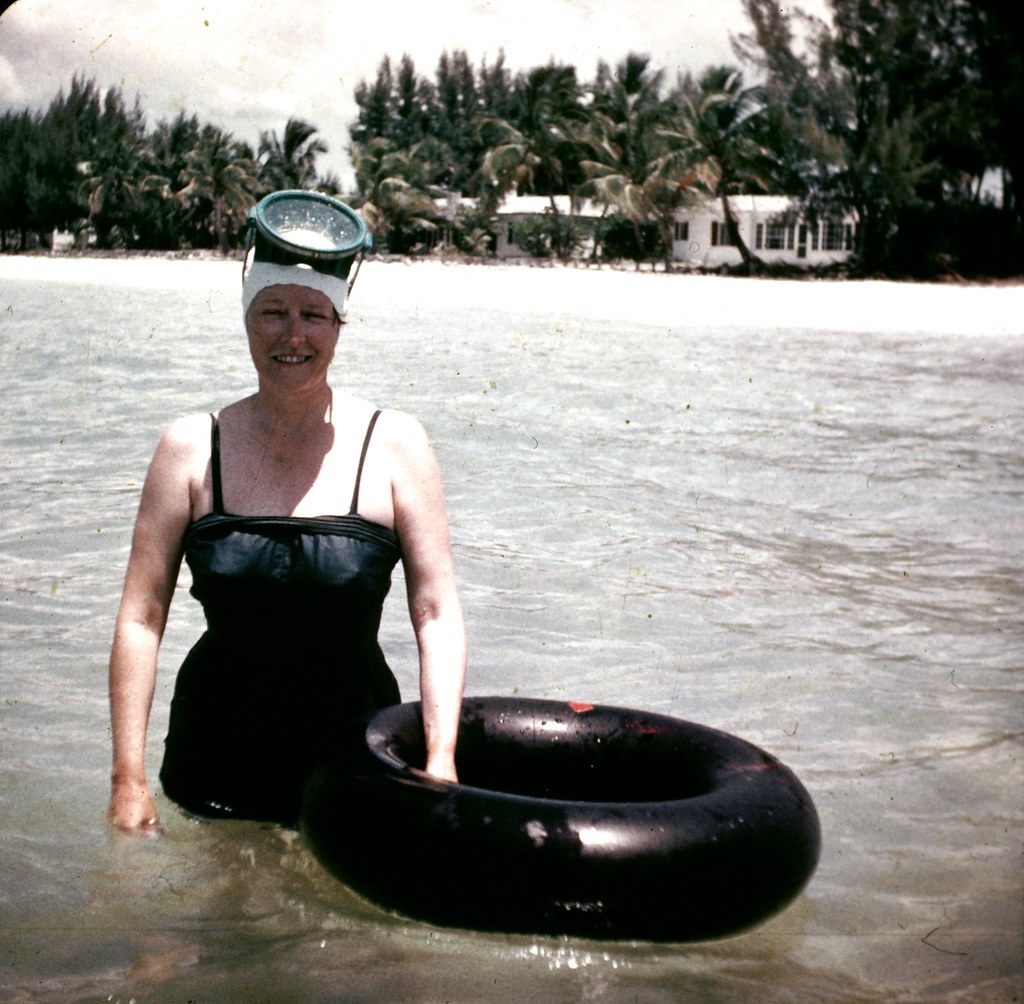This is the 1946 "Champion" catalog of the company founded by Rene Cavalero in France where modern spearfishing gained its first impetus post-World War II.
The Cavalero "Champion" eurogun was sold around the world, but although devised in 1943 the war had to end before volume production of the gun and other dive equipment could proceed.
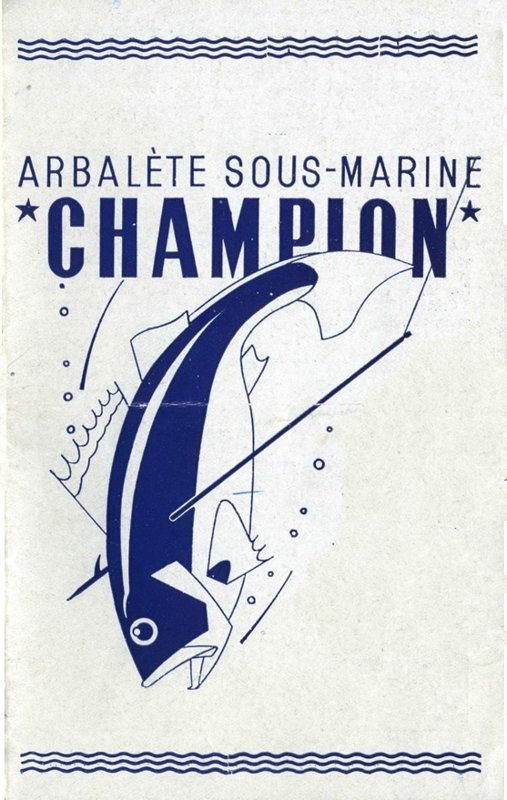

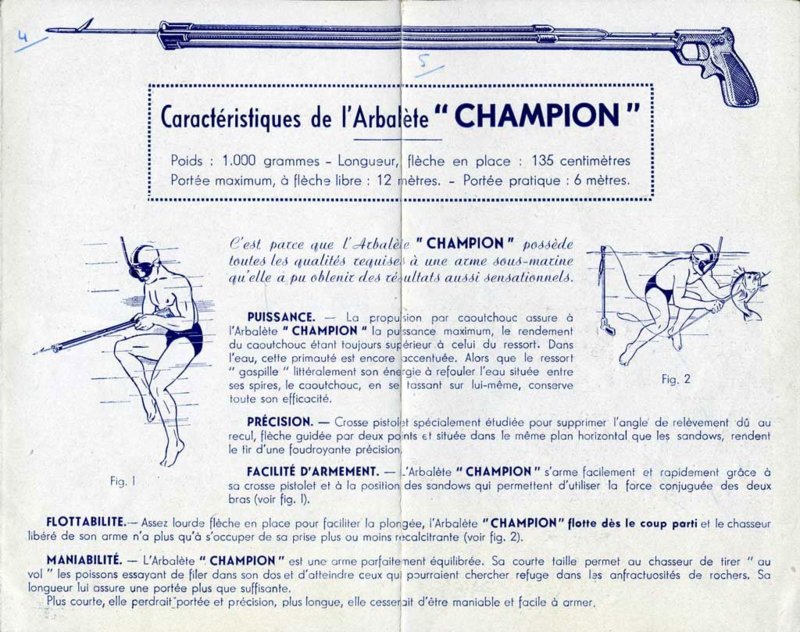

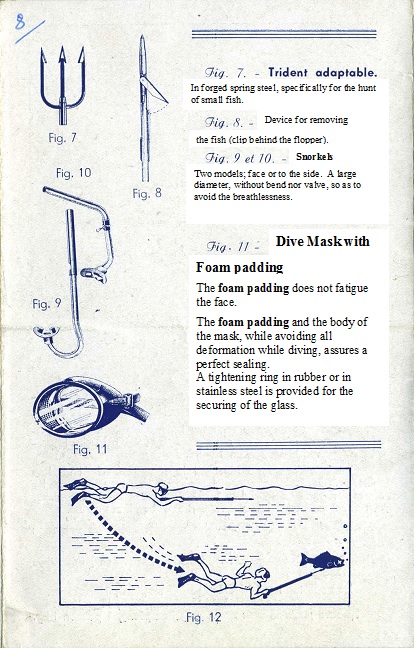
and here is a translation of the Arbalete pages.
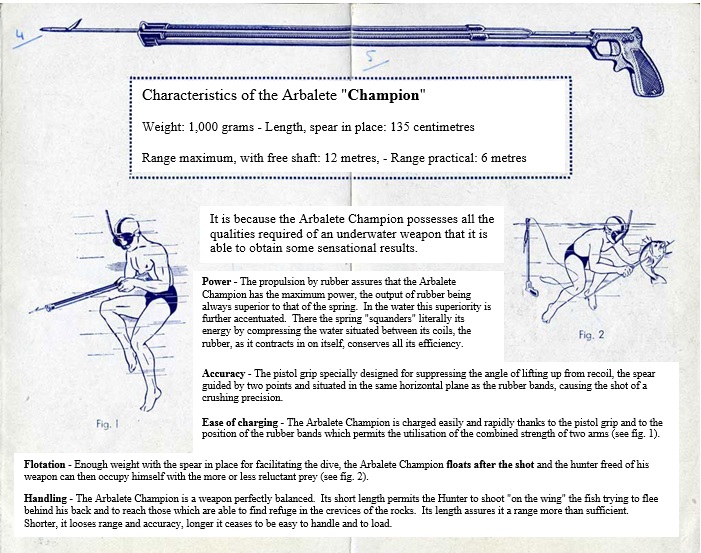
In those early days the guys knew more than we have often given them credit for if you closely read the above double page spread.
The Cavalero "Champion" eurogun was sold around the world, but although devised in 1943 the war had to end before volume production of the gun and other dive equipment could proceed.
and here is a translation of the Arbalete pages.
In those early days the guys knew more than we have often given them credit for if you closely read the above double page spread.






